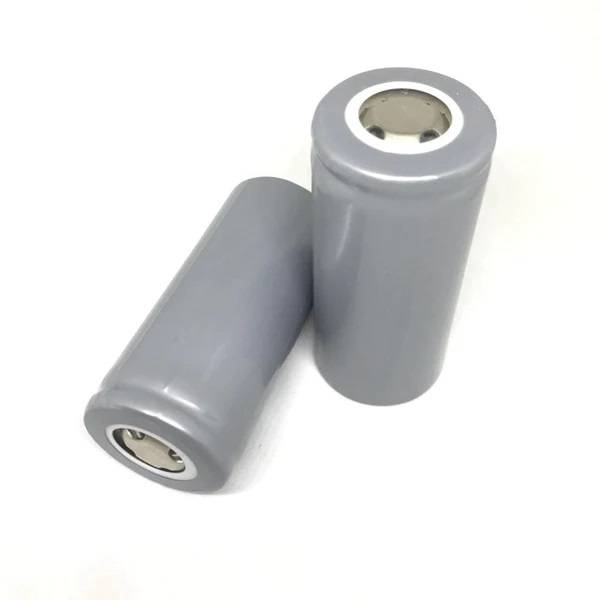Solid-state batteries are emerging as a transformative power source, promising higher energy densities and enhanced safety compared to traditional lithium-ion batteries. This article explores how solid-state technology will redefine power sources across various applications, including electric vehicles and portable electronics.
What Are Solid-State Batteries and How Do They Work?
Solid-state batteries utilize a solid electrolyte instead of the liquid electrolytes found in conventional lithium-ion batteries. This solid electrolyte can be made from materials like ceramics or polymers, allowing for improved ion conductivity and energy density. The structure consists of an anode, a cathode, and the solid electrolyte, which facilitates ion movement during charging and discharging.
Chart: Structure of a Solid-State Battery
| Component | Function |
|---|---|
| Anode | Stores lithium ions during charging |
| Cathode | Releases lithium ions during discharge |
| Solid Electrolyte | Conducts ions between anode and cathode |
How Do Solid-State Batteries Compare to Traditional Lithium-Ion Batteries?
Solid-state batteries offer significant advantages over traditional lithium-ion batteries:
- Energy Density: Higher energy density allows for longer battery life and reduced weight.
- Safety: The solid electrolyte minimizes risks of leakage and fire.
- Longevity: They typically have a longer cycle life, meaning they can withstand more charge-discharge cycles without degradation.
Chart: Comparison of Battery Types
| Feature | Lithium-Ion | Solid-State |
|---|---|---|
| Energy Density | Lower | Higher |
| Safety | Moderate risk of fire | Much lower risk |
| Cycle Life | Limited | Potentially longer |
What Advantages Do Solid-State Batteries Offer?
The advantages of solid-state batteries are compelling:
- Higher Energy Efficiency: They can store more energy per unit volume, making them ideal for applications where space is limited.
- Enhanced Safety Features: The absence of flammable liquid electrolytes reduces fire hazards significantly.
- Faster Charging Times: Many solid-state designs support quicker charging capabilities compared to their lithium-ion counterparts.
What Challenges Must Be Addressed for Widespread Adoption?
Despite their promise, several challenges must be overcome for solid-state batteries to achieve widespread adoption:
- Manufacturing Complexity: Producing solid-state batteries at scale remains technically challenging and costly.
- Material Limitations: Finding suitable materials that can efficiently conduct ions while remaining stable is crucial.
- Integration with Existing Technologies: Adapting current battery management systems to work with solid-state technology is necessary for seamless transition.
How Is the Market for Solid-State Batteries Changing?
The market for solid-state batteries is evolving rapidly as demand for safer, more efficient power sources grows:
- Investment Surge: Major automotive manufacturers and tech companies are investing heavily in research and development of solid-state technologies.
- Partnerships and Collaborations: Companies are forming strategic partnerships to share expertise and resources in developing solid-state battery solutions.
Industrial News
Recent reports indicate that several companies are nearing commercial production of solid-state batteries. Toyota has announced plans to release its first solid-state battery-powered vehicle by 2025. Meanwhile, QuantumScape, backed by Volkswagen, has made significant advancements in its battery technology, promising a breakthrough in energy density and safety features.
What Future Innovations Can We Anticipate in Solid-State Battery Technology?
Future innovations in solid-state battery technology may include:
- Advanced Materials Research: Ongoing studies aim to discover new materials that enhance conductivity and stability.
- Integration with Renewable Energy Sources: Solid-state batteries could play a crucial role in energy storage solutions for solar and wind power systems.
- Miniaturization for Consumer Electronics: As technology advances, we may see smaller, more efficient batteries suitable for smartphones and wearables.
Redway Expert Insights
“Solid-state batteries represent a significant leap forward in energy storage technology,” says Dr. Jane Redway, a leading researcher in battery development. “Their potential to enhance safety while increasing energy capacity could revolutionize not just electric vehicles but also portable electronics.”
FAQ Section
Q1: What is a solid-state battery?
A1: A solid-state battery uses a solid electrolyte instead of a liquid one, allowing for higher energy density and improved safety.Q2: How do solid-state batteries compare to lithium-ion batteries?
A2: They offer higher energy density, enhanced safety features, and longer cycle life compared to traditional lithium-ion batteries.Q3: What challenges do solid-state batteries face?
A3: Key challenges include high manufacturing costs, material limitations, and integration with existing technologies.Q4: How is the market evolving for solid-state batteries?
A4: The market is seeing increased investment from major companies aiming to commercialize this technology due to rising demand for efficient power sources.Q5: What future developments can we expect in this field?
A5: Innovations may include advanced materials research, integration with renewable energy systems, and miniaturization for consumer electronics.



